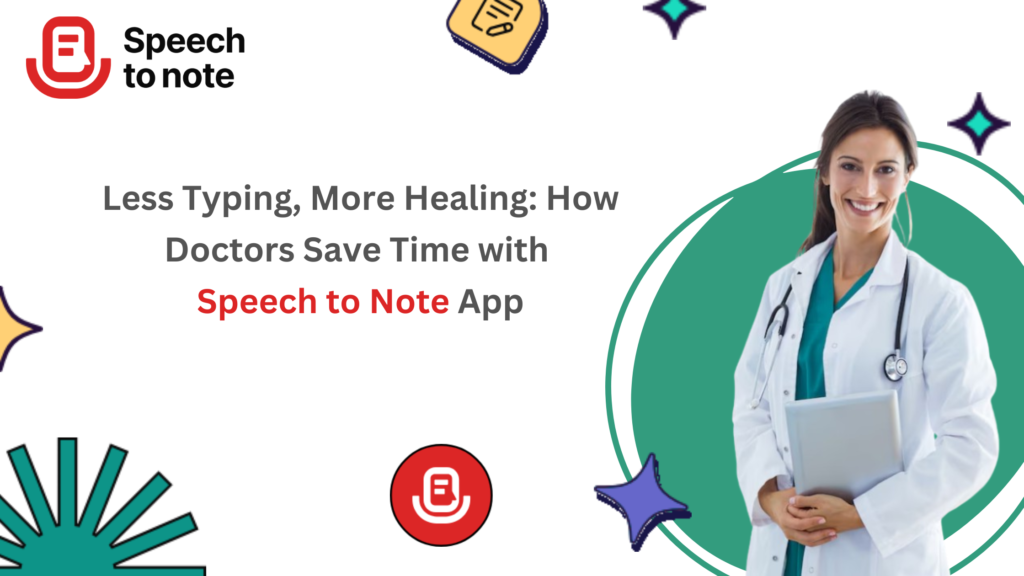
Every doctor knows this feeling: you finish a packed clinic day, yet instead of heading home, you’re stuck typing notes into an electronic health record. That’s time you don’t spend talking to patients, reviewing cases, or—imagine this—actually resting.
Here’s the thing: the hours lost to documentation are staggering. A study in Annals of Internal Medicine found that for every hour doctors spend with patients, nearly two more go into desk work. The good news? You don’t have to live like this anymore.
Why keep typing when you can just talk?
Speech to note apps are quietly changing the game. Instead of hammering away at a keyboard, doctors can dictate everything as they go. Using speech to text technology, these apps turn spoken words into organized, editable notes—no frantic typing, no after-hours backlog.
Picture this: you walk out of an exam room, open your phone, and speak into it for thirty seconds. By the time you reach your next patient, the note is already written, structured, and saved. That’s the power of dictation done right.
It’s not clunky like the old days
If you’re imagining those clumsy voice recorders from a decade ago, forget it. Modern apps don’t just record—they create actual text you can copy, share, or drop straight into your EHR. You can capture notes with voice while you’re making rounds, driving home, or even grabbing a quick coffee.
Some apps, like Speech to Note, work almost like having a smart assistant in your pocket. You speak naturally—no weird commands or rigid phrasing—and it writes everything down. You can even add notes on speech mid-conversation without interrupting your flow with the patient.
Real examples from real clinics
Dr. Patel, an internist in Houston, used to spend two hours every night typing charts. After switching to a speak writer, she finishes documentation before leaving the hospital. She says it feels like “getting her life back.”
In another case, a small pediatric practice used Speech to Note for a month and shaved nearly eight hours off their weekly admin load. That’s an entire workday returned to patient care—or frankly, to their sanity.
More than time savings—it improves care
When you’re not buried in paperwork, you’re actually listening. Patients feel it. Your notes are also fresher and more accurate because you dictate right after the visit, not hours later when details blur together. That’s not just convenient—it’s safer.
Imagine finishing your clinic day at 5 p.m. instead of 7:30, with no backlog waiting at home. What this really means is fewer mistakes, less burnout, and more bandwidth to focus on the medicine itself.
So, what’s the catch?
Honestly, there isn’t much of one. The best apps are HIPAA-compliant, work offline, and sync across devices. The only adjustment is getting comfortable speaking your thoughts aloud rather than typing them. But after a week or two, it becomes second nature.
If you want to see how it works in action, check out this demo video. It shows how simple and fast this workflow really is.
Stop typing. Start healing.
You went to medical school to practice medicine, not data entry. A solid speech to note app lets you do just that. Start small—dictate one or two charts a day, see how it feels, then ramp up once you’re comfortable.
You can try Speech to Note today. It’s available on both Apple App Store and Google Play Store. Download it, try it on a single clinic session, and watch how quickly it pays off.
Less typing. More healing. And maybe—finally—more time for yourself.